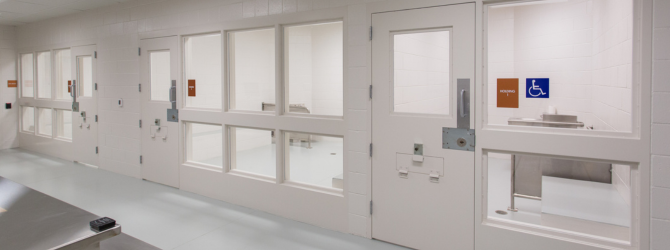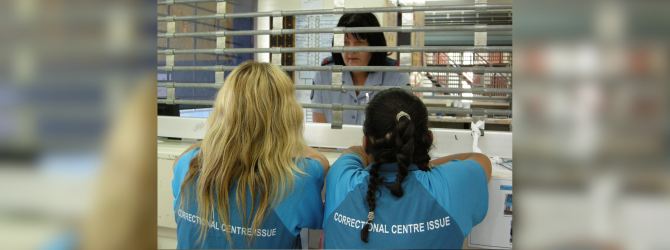The Health of People in Australia's Prisons
The Australian Government recently released national data revealing the health of people in Australia’s prisons throughout 2022. This information, collected every three years through the National Prisoner Health Data Collection (NPHDC), offers insights into the health journey of individuals throughout their time in prison, from entry to release.
Please note, the data captured does not reflect the entire prison population.
Why Is This Report Important?
Health care is a human right and people in prison have a universal right to access equivalent healthcare to that which is available in the community.
Typically, individuals in prison exhibit poorer health than the general population, often being considered elderly between the ages of 45-55 instead of the conventional 65 and over.
Over the past decade (2012-2022), the Australian prison population has surged by 38%. Maintaining robust social, physical, and emotional well-being is integral to the rehabilitation process and successful reintegration into society upon release.

Key Findings from the 2022 Report
The 2022 report highlighted several concerning trends in the physical and emotional well-being of people in prison:
- 2 in 3 prison entrants reported they had previously been in prison
- 2 in 5 prison entrants had been in prison within the previous 12 months
- Half of prison entrants reported a chronic physical health condition
- Half of prison entrants reported being told they had a mental health condition
- 1 in 5 currently take mental health-related medication
- 1 in 5 prison entrants reported a history of self-harm
- 3 in 4 prison entrants reported using illicit drugs in the previous year
- 1 in 7 prison dischargees reported injecting drugs in prison
- Nearly half of prison dischargees expected they would be homeless on release
- Around 2 in 5 prison entrants reported having dependent children in the community
Contrary to common belief, incarceration is associated with decreased injecting drug use but increased high-risk behaviours related to hepatitis C and other blood-borne viruses. This is primarily due to limited access to evidence-based harm reduction options such as needle and syringe programs.
Similarly, tattooing practices, while offering a creative outlet for individuals in prison, contribute to increased risks of blood-borne viruses due to shared equipment. With evidence-based harm reduction options not available inside prisons, those incarcerated continue to be at a higher risk of blood-borne viruses and long-term health issues.
Healthcare Challenges in Prison
Prisons tend to provide an opportune time to address the health needs of people who often face challenges accessing health care in the community. However, this potential is undermined by the complex prison environment – frequent movement of people within and across centres, limited infrastructure and staffing, and overcrowding.
Many prisons in Queensland operate at over 100% capacity, compromising both equitable access to care and the quality of care provided. Not only is this impactful at the individual level, but it greatly impacts how prisons can maintain a safe and healthy environment.
Frequent movement occurs to try and counteract this, but that also adds a layer of complexity for health staff to maintain adequate continuity of care for people in prison.
Prison health is public health, and minimising barriers for people in prison to access healthcare is crucial in improving the health of those in prison as well as the public health of Australian communities.

A Look Back: 2018 vs 2022
Comparing the 2018 and 2022 reports reveals minimal changes, raising concerns about the continued social, physical, and emotional health and well-being of individuals entering and exiting Australian prisons.
The 2018 report highlighted:
- 3 in 4 prison entrants reported they had previously been in prison
- Almost half (45%) of prison entrants had been in prison within the previous 12 months
- Almost 1 in 3 prison entrants reported a chronic physical health condition
- 2 in 5 prison entrants and dischargees had been told they had a mental health condition
- Almost 1 in 4 currently take mental health-related medication
- 1 in 5 prison entrants reported a history of self-harm
- 2 in 3 prison entrants reported using illicit drugs in the previous year
- 1 in 12 prison dischargees reported injecting drugs in prison
- Just over half of prison dischargees expected they would be homeless on release
- Around 2 in 5 prison entrants report having dependent children in the community
So, What Are the Takeaways Here?
The 2022 report highlights that people in prison often have higher health needs, whereas the nature and systems of the prison environment can significantly impact equitable access to healthcare.
The persistent challenges of inadequate infrastructure, staffing, and harm reduction practices continue to hinder healthcare within the prison environment. As the prison population continues to rise, so do the concerns about the implications for healthcare.
All Human, All Equal
We need to advocate for chance, recognising that people in prison relinquish the right of free movement, not the right to health care.
